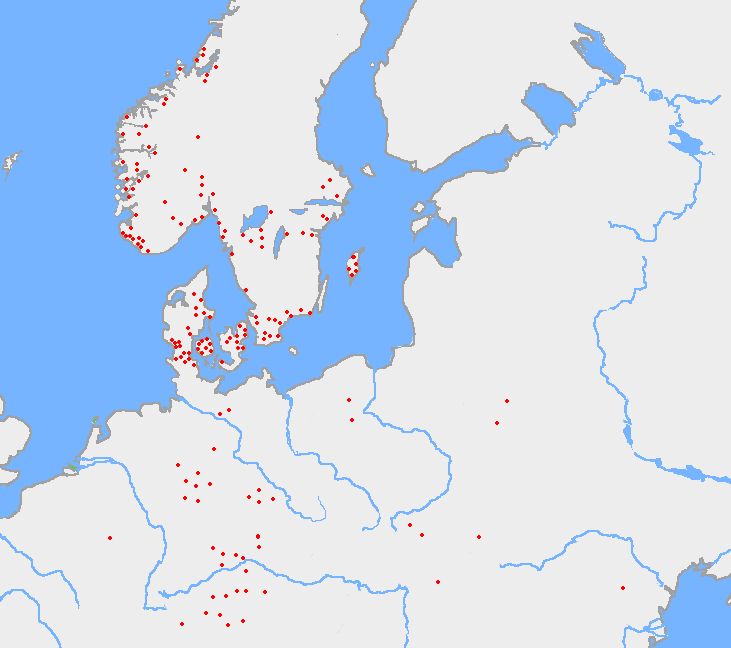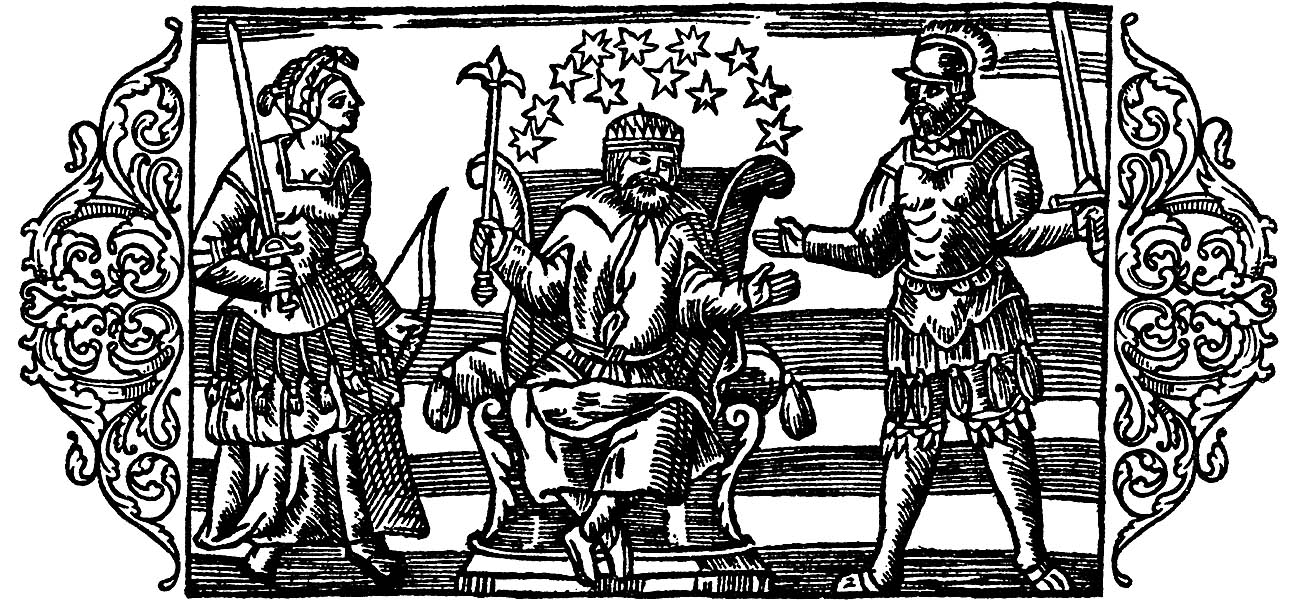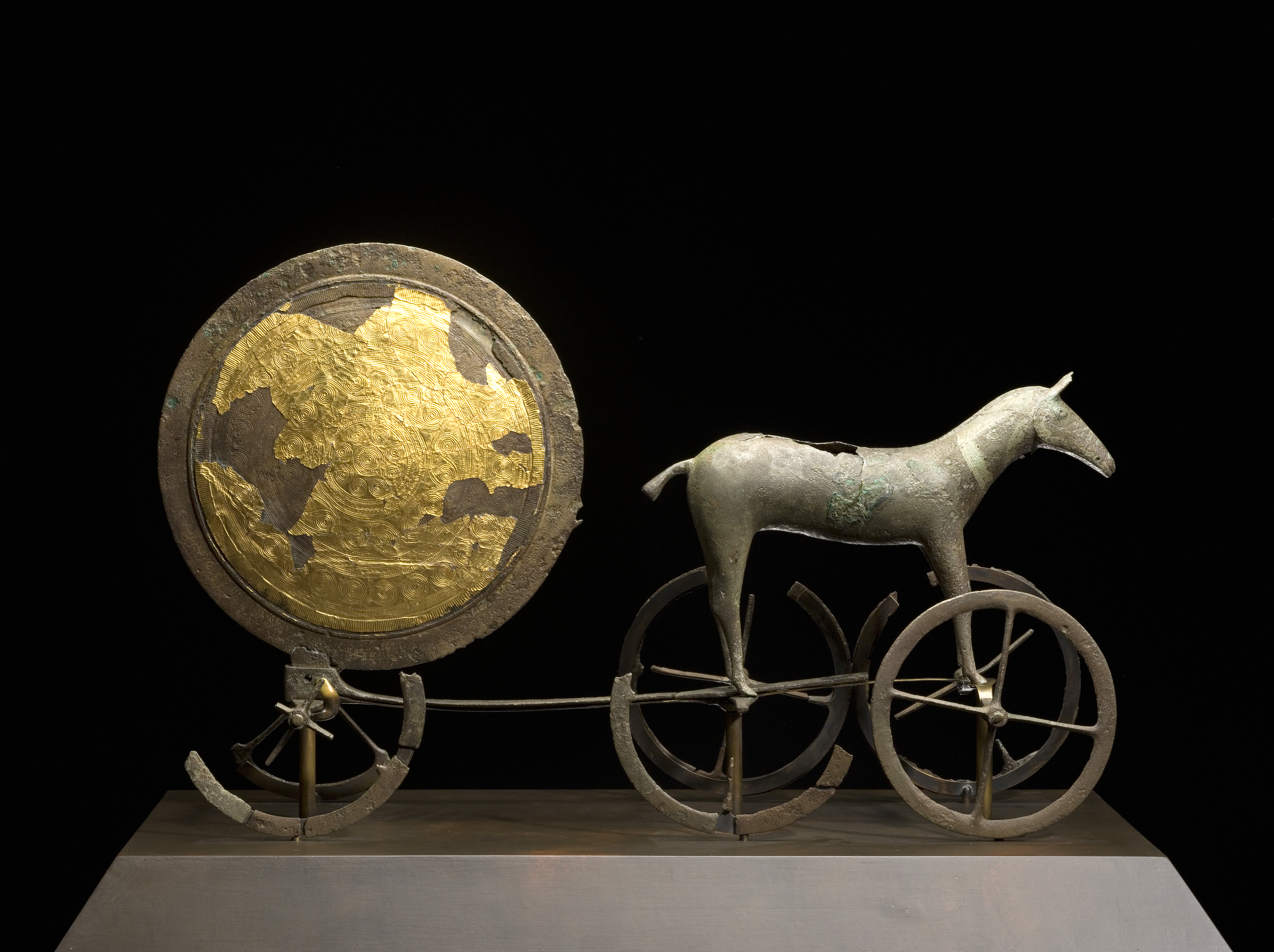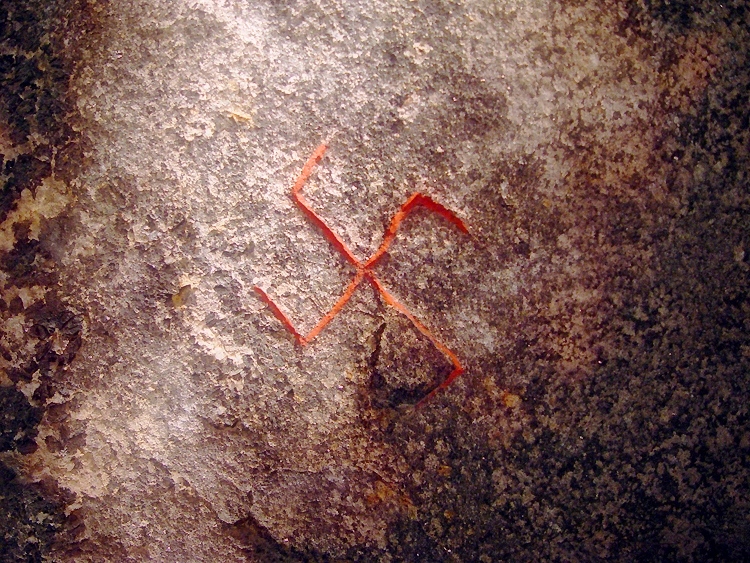|
Bracteate
A bracteate (from the Latin ''bractea'', a thin piece of metal) is a flat, thin, single-sided gold medal worn as jewelry that was produced in Northern Europe predominantly during the Migration Period of the Germanic Iron Age (including the Vendel era in Sweden). Bracteate coins are also known from the medieval kingdoms around the Bay of Bengal, such as Harikela and Mon city-states. The term is also used for thin discs, especially in gold, to be sewn onto clothing in the ancient world, as found for example in the ancient Persian Oxus treasure, and also later silver coins produced in central Europe during the Early Middle Ages. Gold bracteates from the Migration Period Gold bracteates commonly denote a certain type of jewelry, made mainly in the 5th to 7th century AD, represented by numerous gold specimens. Bead-rimmed and fitted with a loop, most were intended to be worn suspended by a string around the neck, supposedly as an amulet. The gold for the bracteates came from co ... [...More Info...] [...Related Items...] OR: [Wikipedia] [Google] [Baidu] |
Elder Futhark
The Elder Futhark (or Fuþark, ), also known as the Older Futhark, Old Futhark, or Germanic Futhark, is the oldest form of the runic alphabets. It was a writing system used by Germanic peoples for Northwest Germanic dialects in the Migration Period. Inscriptions are found on artifacts including jewelry, amulets, plateware, tools, and weapons, as well as runestones, from the 2nd to the 8th centuries. In Scandinavia, beginning in the late 8th century, the script was simplified to the Younger Futhark, while the Anglo-Saxons and Frisians instead extended it, giving rise to the Anglo-Saxon runes, Anglo-Saxon futhorc. Both the Anglo-Saxon futhorc and the Younger Futhark remained in use during the Early Middle Ages, Early and the High Middle Ages respectively, but knowledge of how to read the Elder Futhark was forgotten until 1865, when it was deciphered by Norwegian scholar Sophus Bugge. Description The Elder Futhark is named after the initial phoneme of the first six rune names: /f/ ... [...More Info...] [...Related Items...] OR: [Wikipedia] [Google] [Baidu] |
Germanic Paganism
Germanic paganism or Germanic religion refers to the traditional, culturally significant religion of the Germanic peoples. With a chronological dating, chronological range of at least one thousand years in an area covering Scandinavia, the British Isles, modern Germany, the Netherlands, and at times other parts of Europe, the beliefs and practices of Germanic paganism varied. Scholars typically assume some degree of continuity between the beliefs and practices of the Roman era and those found in Norse paganism, as well as between Germanic religion and reconstructed Indo-European religion and post-conversion folklore, though the precise degree and details of this continuity are subjects of debate. Germanic religion was influenced by neighboring cultures, including that of the Celts, the Roman people, Romans, and, later, by Christianity. Very few sources exist that were written by pagan adherents themselves; instead, most were written by outsiders and can thus present problems for ... [...More Info...] [...Related Items...] OR: [Wikipedia] [Google] [Baidu] |
Odin
Odin (; from ) is a widely revered god in Norse mythology and Germanic paganism. Most surviving information on Odin comes from Norse mythology, but he figures prominently in the recorded history of Northern Europe. This includes the Roman Empire's partial occupation of Germania ( BCE), the Migration Period (4th–6th centuries CE) and the Viking Age (8th–11th centuries CE). Consequently, Odin has hundreds of names and titles. Several of these stem from the reconstructed Proto-Germanic theonym ''Wōðanaz'', meaning "lord of frenzy" or "leader of the possessed", which may relate to the god's strong association with poetry. Most mythological stories about Odin survive from the 13th-century ''Prose Edda'' and an earlier collection of Old Norse poems, the ''Poetic Edda'', along with other Old Norse items like '' Ynglinga saga''. The ''Prose Edda'' and other sources depict Odin as the head of the pantheon, sometimes called the Æsir, and bearing a spear and a ring. Wid ... [...More Info...] [...Related Items...] OR: [Wikipedia] [Google] [Baidu] |
Wodan
Odin (; from ) is a widely revered god in Norse mythology and Germanic paganism. Most surviving information on Odin comes from Norse mythology, but he figures prominently in the recorded history of Northern Europe. This includes the Roman Empire's partial occupation of Germania ( BCE), the Migration Period (4th–6th centuries CE) and the Viking Age (8th–11th centuries CE). Consequently, Odin has hundreds of names and titles. Several of these stem from the reconstructed Proto-Germanic theonym ''Wōðanaz'', meaning "lord of frenzy" or "leader of the possessed", which may relate to the god's strong association with poetry. Most mythological stories about Odin survive from the 13th-century ''Prose Edda'' and an earlier collection of Old Norse poems, the ''Poetic Edda'', along with other Old Norse items like ''Ynglinga saga''. The ''Prose Edda'' and other sources depict Odin as the head of the pantheon, sometimes called the Æsir, and bearing a spear and a ring. Wider ... [...More Info...] [...Related Items...] OR: [Wikipedia] [Google] [Baidu] |
Hugin And Munin
In Norse mythology, Huginn and Muninn ( or ; roughly "mind and will" – ''see '') are a pair of ravens that serve under the god Odin and fly all over the world, Midgard, and bring information to the god Odin. Huginn and Muninn are attested in the ''Poetic Edda'', compiled in the 13th century from earlier traditional sources: the ''Prose Edda'' and '' Heimskringla''; in the '' Third Grammatical Treatise'', compiled in the 13th century by Óláfr Þórðarson; and in the poetry of skalds. The names of the ravens are sometimes anglicized as Hugin and Munin, the same spelling as used in modern Danish, Norwegian, and Swedish. In the ''Poetic Edda'', a disguised Odin expresses that he fears the ravens may not return from their daily flights. The ''Prose Edda'' explains that Odin is referred to as '' Hrafnaguð'' (O.N.: ; "raven-god") due to his association with Huginn and Muninn. In the ''Prose Edda'' and the ''Third Grammatical Treatise'', the two ravens are described as perching ... [...More Info...] [...Related Items...] OR: [Wikipedia] [Google] [Baidu] |
Germanic Iron Age
The archaeology of Northern Europe studies the prehistory of Scandinavian Peninsula, Scandinavia and the adjacent North European Plain, roughly corresponding to the territories of modern Sweden, Norway, Denmark, Northern Germany, Poland, the Netherlands and Belgium. The region entered the Mesolithic around the 7th millennium BC. The transition to the Neolithic Europe, Neolithic is characterized by the Funnelbeaker culture in the 4th millennium BC. The Chalcolithic Europe, Chalcolithic is marked by the arrival of the Corded Ware culture, possibly the first influence in the region of Kurgan hypothesis, Indo-European expansion. The Nordic Bronze Age proper began roughly one millennium later, around 1500 BC. The end of the Bronze Age is characterized by cultural contact with the Central European La Tène culture (Celts), contributing to the development of the Iron Age Scandinavia, Iron Age by the 4th century BC, presumably the locus of Common Germanic culture. Northern Europe enters ... [...More Info...] [...Related Items...] OR: [Wikipedia] [Google] [Baidu] |
Runic Alphabet
Runes are the Letter (alphabet), letters in a set of related alphabets, known as runic rows, runic alphabets or futharks (also, see ''#Futharks, futhark'' vs ''#Runic alphabets, runic alphabet''), native to the Germanic peoples. Runes were primarily used to represent a sound value (a phoneme) but they were also used to represent the concepts after which they are named (ideographic runes). Runology is the academic study of the runic alphabets, runic inscriptions, runestones, and their history. Runology forms a specialised branch of Germanic philology. The earliest secure runic inscriptions date from at latest AD 150, with a possible earlier inscription dating to AD 50 and Tacitus's possible description of rune use from around AD 98. The Svingerud Runestone dates from between AD 1 and 250. Runes were generally replaced by the Latin alphabet as the cultures that had used runes underwent Christianisation, by approximately AD 700 in central Europe and 1100 in northern Europe. Ho ... [...More Info...] [...Related Items...] OR: [Wikipedia] [Google] [Baidu] |
Swastika
The swastika (卐 or 卍, ) is a symbol used in various Eurasian religions and cultures, as well as a few Indigenous peoples of Africa, African and Indigenous peoples of the Americas, American cultures. In the Western world, it is widely recognized as a symbol of the German Nazi Party who Cultural appropriation, appropriated it for their party insignia starting in the early 20th century. The appropriation continues with its use by Neo-Nazism, neo-Nazis around the world. The swastika was and continues to be used as a symbol of divinity and spirituality in Indian religions, including Hinduism, Buddhism, and Jainism. It generally takes the form of a cross, the arms of which are of equal length and perpendicular to the adjacent arms, each bent midway at a right angle. The word ''swastika'' comes from , meaning 'conducive to well-being'. In Hinduism, the right-facing symbol (clockwise) () is called , symbolizing ('sun'), prosperity and good luck, while the left-facing symbol ... [...More Info...] [...Related Items...] OR: [Wikipedia] [Google] [Baidu] |
Christian Jürgensen Thomsen
Christian Jürgensen Thomsen (29 December 1788 – 21 May 1865) was a Danish antiquarian who developed early archaeological techniques and methods. In 1816 he was appointed head of 'antiquarian' collections which later developed into the National Museum of Denmark in Copenhagen. While organizing and classifying the antiquities for exhibition, he decided to present them chronologically according to the three-age system. Other scholars had previously proposed that prehistory had advanced from an age of stone tools, to ages of tools made from bronze and iron, but these proposals were presented as systems of evolution, which did not allow dating of artifacts. Thomsen refined the three-age system as a chronological system by seeing which artifacts occurred with which other artifacts in closed finds. In this way, he was the first to establish an evidence-based division of prehistory into discrete periods. This achievement led to his being credited as the originator of the three-a ... [...More Info...] [...Related Items...] OR: [Wikipedia] [Google] [Baidu] |
Migration Period
The Migration Period ( 300 to 600 AD), also known as the Barbarian Invasions, was a period in European history marked by large-scale migrations that saw the fall of the Western Roman Empire and subsequent settlement of its former territories by various tribes, and the establishment of post-Roman kingdoms there. The term refers to the important role played by the migration, invasion, and settlement of various tribes, notably the Burgundians, Vandals, Goths, Alemanni, Alans, Huns, early Slavs, Pannonian Avars, Bulgars and Magyars within or into the territories of Europe as a whole and of the Western Roman Empire in particular. Historiography traditionally takes the period as beginning in AD 375 (possibly as early as 300) and ending in 568. Various factors contributed to this phenomenon of migration and invasion, and their role and significance are still widely discussed. Historians differ as to the dates for the beginning and ending of the Migration Period. The beginni ... [...More Info...] [...Related Items...] OR: [Wikipedia] [Google] [Baidu] |







